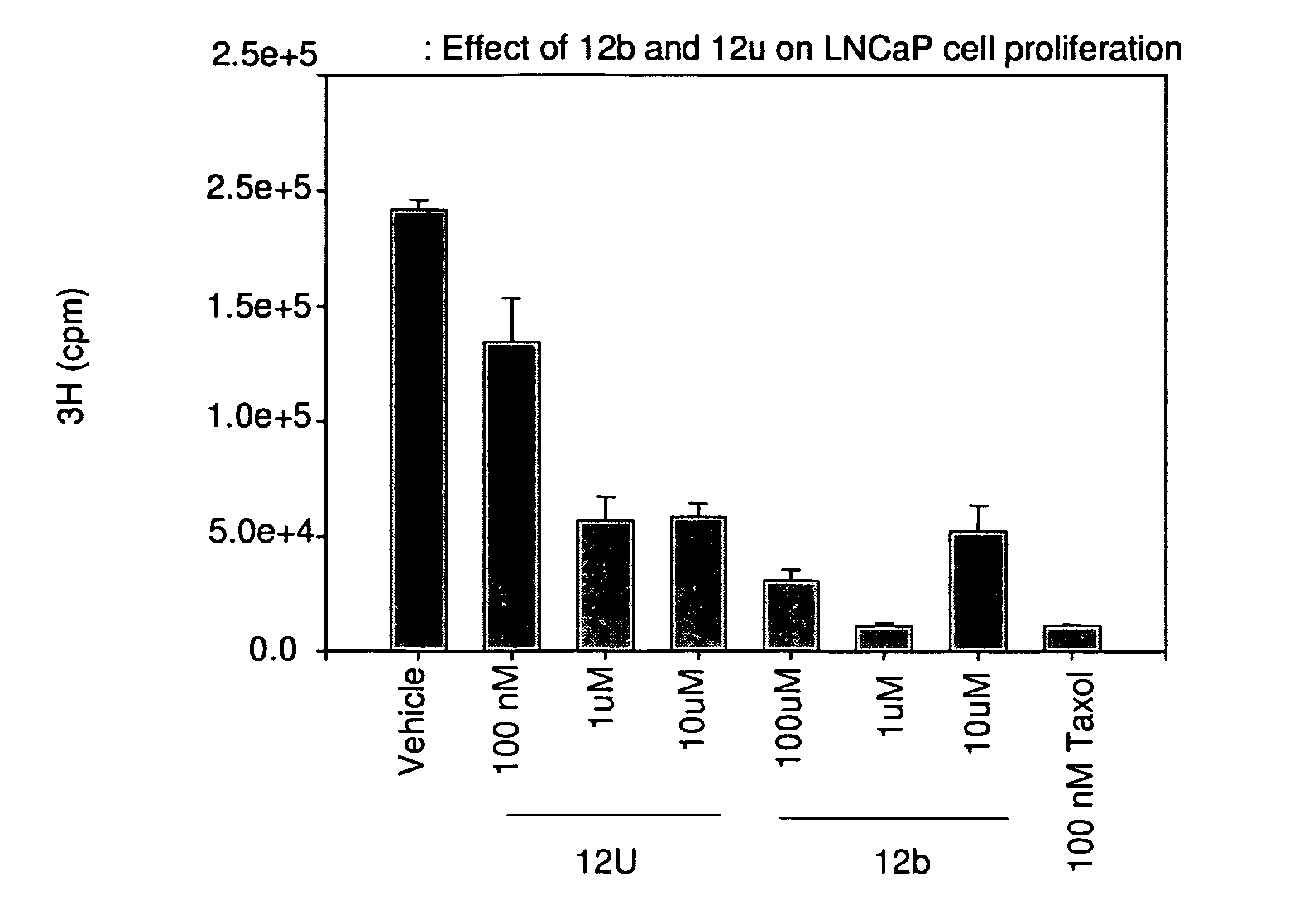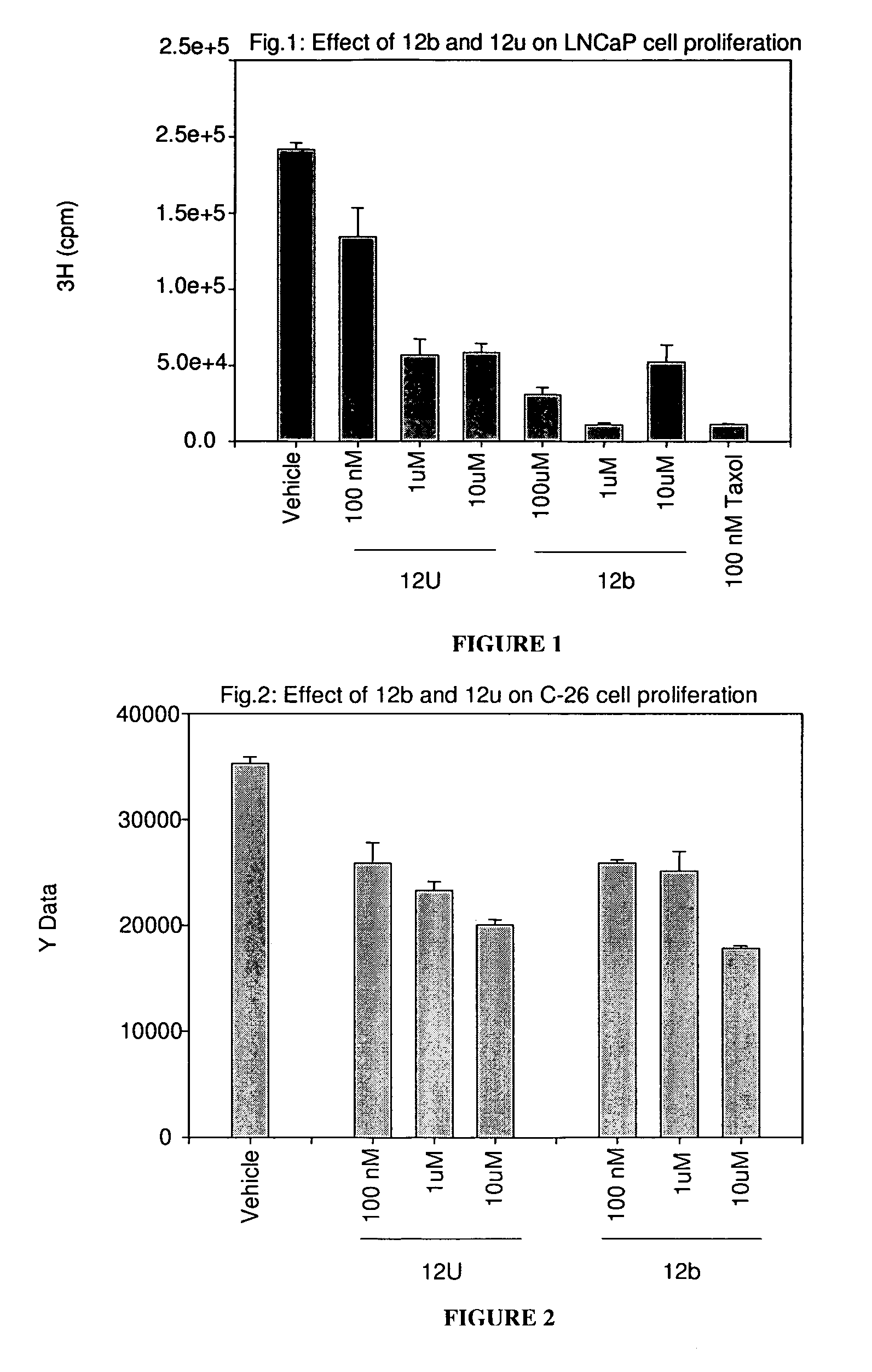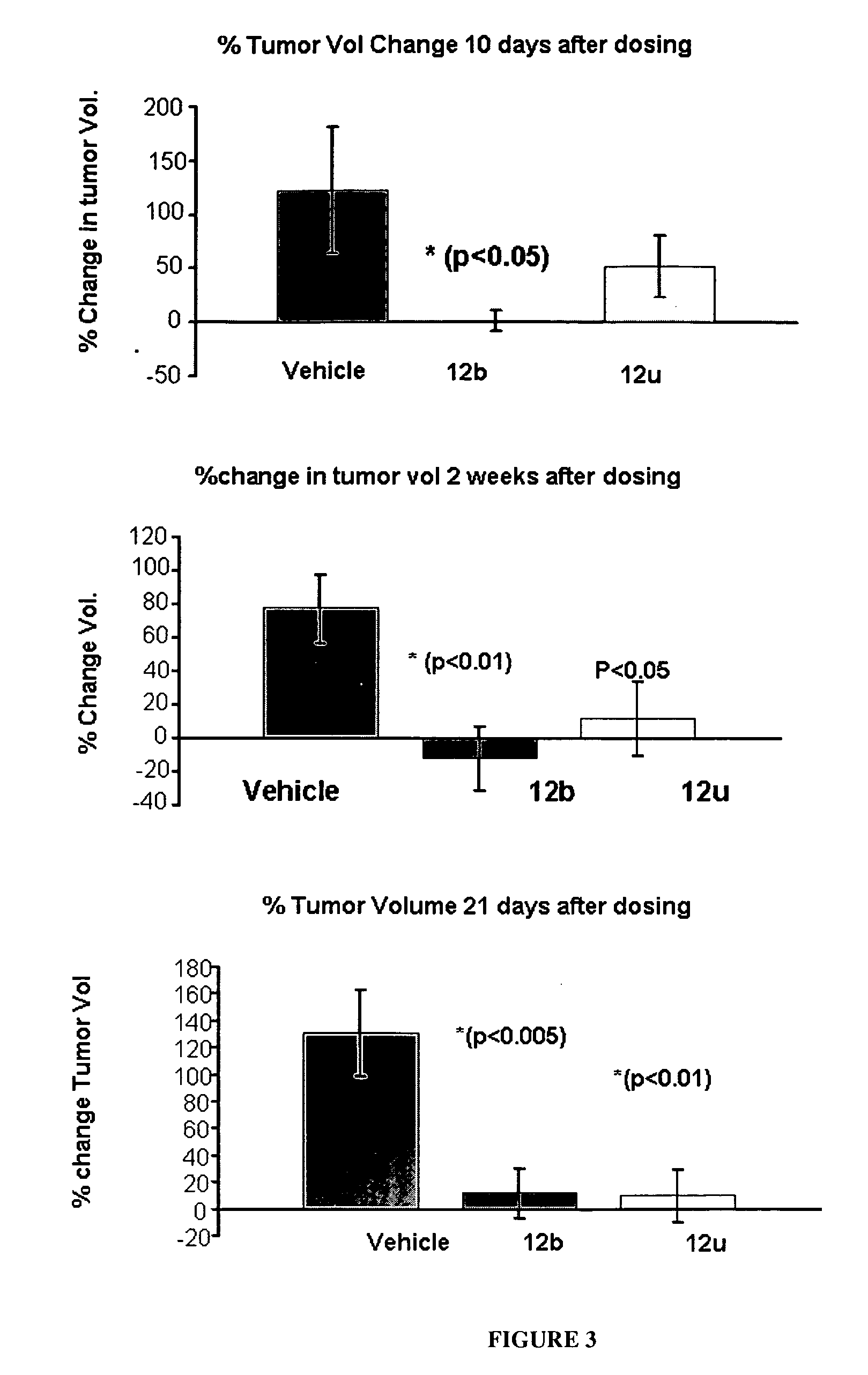Nuclear receptor binding agents
a technology of nuclear receptors and binding agents, applied in the field of nuclear receptor binding agents, can solve the problems of compromising their function, oxidative damage accumulation, causing or exacerbating various age-related pathologies, etc., and achieve the effects of promoting or enhancing the activity of cellular superoxide dismutase catalase, preventing the generation of reactive oxygen species-mediated damage, and treating, ameliorating or preventing damag
- Summary
- Abstract
- Description
- Claims
- Application Information
AI Technical Summary
Benefits of technology
Problems solved by technology
Method used
Image
Examples
example 1
Estrogen Receptor Binding Affinities, Agonist and Antagonist Activity of Some Embodiments of NRBAs of the Invention
Materials and Methods
[0633]ER binding affinity was determined via one of the following methods:
Method 1:
[0634]Human recombinant estrogen receptor (ER) was expressed in insect Sf9 cells and a radioactive competitive binding assay was performed using tritiated estradiol. If the NRBAs tested showed a ≧≧50% inhibition of [3H] estradiol binding at 1 μM (1000 nM) concentration, the compounds were assayed using four concentrations to determine IC50 and Ki estimates.
Method 2:
[0635]Estrogen receptor (ER) binding affinity of the NRBAs was also determined using an in vitro competitive radioligand-binding assay with [3H]-estradiol ([3H]-E2, PerkinElmer), a high affinity ligand for both ERα and ERβ. The equilibrium dissociation constant (Kd) of [3H]-E2 was determined by incubating increasing concentrations of [3H]-E2 (0.01 to 10 nM) with bacterially expressed ERα or β ligand binding...
example 2
Effects of NRBA on ER-α and ER-β Transactivation
[0643]COS or 293 cells were plated in DME without phenol red+10% cs FBS at 90,000 cells per well in 24 well plates, and were transfected with 0.25 μg of the vector “ERE-LUC”, where a firefly luciferase gene was driven by two estrogen responsive elements and 0.02 μg of the control CMV-LUC, Renilla where a luciferase gene was driven by a CMV promoter. Also 25 ng of ER-α), 50 ng of ER-β or 12.5 ng of AR were introduced by lipofectamine. All the receptors were cloned from rat tissue into the PCR3.1 vector backbone. Twenty four hours post transfection, cells were treated with compounds of this invention, estrogen, DHT, and other NRBAs or combinations thereof. Cells were harvested 48 hrs after transfection, and assayed for firefly and Renilla luciferase activity.
[0644]Representative examples of the NRBAs of this invention and their activity under the indicated conditions were as follows
ER-α agonists: 12y (ER-α: Ki=36 nM; 12u (ER-α: Ki=32 nM;...
example 3
Anti-Proliferative Effect of NRBAs on Prostate and Colon Cancer Cell Lines
[0649]The effects of treatment of an ER-β selective NRBA of this invention on cancer cell proliferation was examined using LNCaP prostate cancer cells and C-26 colon cancer cells. LNCaP or C-26 cells were plated in growth medium in 24 well and 6 well plates, respectively. LNCaP cells were treated for 6 days and C-26 cells were treated for 3 days at the indicated concentration. 3H thymidine incorporation was measured at the end of treatment as an indicator of cell proliferation. FIGS. 1 and 2 show that 12b and 12u significantly inhibited the growth of LNCaP prostate cancer and C-26 colon cancer cells, respectively, indicative of their potent anti-proliferative effects.
PUM
| Property | Measurement | Unit |
|---|---|---|
| Density | aaaaa | aaaaa |
| Ratio | aaaaa | aaaaa |
Abstract
Description
Claims
Application Information
 Login to View More
Login to View More - R&D
- Intellectual Property
- Life Sciences
- Materials
- Tech Scout
- Unparalleled Data Quality
- Higher Quality Content
- 60% Fewer Hallucinations
Browse by: Latest US Patents, China's latest patents, Technical Efficacy Thesaurus, Application Domain, Technology Topic, Popular Technical Reports.
© 2025 PatSnap. All rights reserved.Legal|Privacy policy|Modern Slavery Act Transparency Statement|Sitemap|About US| Contact US: help@patsnap.com



